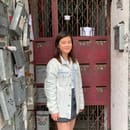In today’s society, the conventional adult life involves getting a stable job, a house, paying off your mortgage, having kids, retiring, and deciding what you want to do with the rest of it because you should have made and saved enough money by then. People aim to live this kind of life because it promises stability, but only to a certain extent. Afterall, how predictable is life? This then leads to the question, is living this conventional life the only way to live fully? The Oscar-winning film, Nomadland directed by Chloe Zhao is a raw, beautifully crafted depiction of people who chose the unconventional life of modern-day nomads and their stories, exploring different societal values and how the unpredictable nature of life and death fits into the picture.
Filmed across Nebraska, South Dakota, Nevada, Arizona, and California, Nomadland is a story about Fern, the main character (Frances McDormand), a recently widowed woman in her sixties who discovered a new way of life from travelling in her van and coming across people with similar stories after losing her job and community when the US Gypsum plant shut down. The wide shots of Fern (or her van) as a small silhouette against the backdrop of national parks, natural landscapes, country roads and the sunsets at these locations near the beginning are mesmerizing as they capture the infinite adventures that await outside what is familiar. Watching these scenes felt freeing. They introduce the audience to this way of living that is entirely different to how the average person pictures life to be. It also managed to only maintain this dreamlike atmosphere for a short while, careful not to romanticize this kind of life too much. By intimately following characters’ journeys through daily hassles, life milestones, and important dates from Fern’s perspective, it shows the reality that just like any other kind of life, it comes with its ups and downs.
The casting and characterization is extremely thoughtful: almost all of the characters in the film are middle-aged or older, people who have inevitably been through loss of loved ones and trauma of some kind, which brings personal significance and depth of emotion behind their choice of this alternative lifestyle. The film features real-life nomads who were interviewed in the writing process of Jessica Bruder’s book, “Surviving America in the 21st Century,” which makes the story all the more realistic.
The dialogues, deliberate quiet moments of reflection in between and the use of only subtle, and occasional background music invite the audience to not only reflect on their own experiences and choices in life, but also be reminded of its fragility. This adds to the authenticity of the film as it mirrors real life conversations, in which people don’t verbalize everything – some things are simply too heavy to fully verbalize.
Similar to the nomadic lifestyle that comes with many uncertainties, the plot in the film is unpredictable without being melodramatic. The flow of events is consistent, raising questions and answering them in clear but subtle ways throughout. It leaves behind a feeling of vague bittersweetness especially with its motif, “see you later down the road” that captures the mix of grief, uncertainty, and hope for life that resonates with everyone. More importantly, it provides a new perspective on how one should live especially when we still have the room to choose. The numerous awards that this film received is undeniably well-deserved because all the artistic details and events are well-written and seamlessly woven together as nothing short of a masterpiece.



